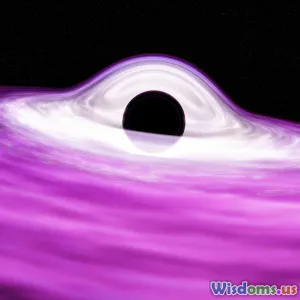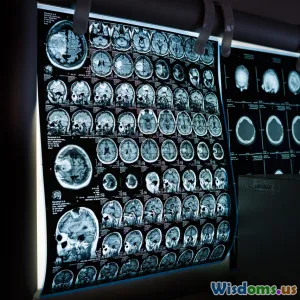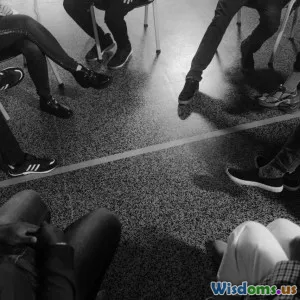
Relativity Explained Simply A Step by Step Guide for Curious Learners
9 min read A clear, step-by-step guide to understanding Einstein's theory of relativity for curious learners. (0 Reviews)
Relativity Explained Simply: A Step-by-Step Guide for Curious Learners
Introduction: Why Relativity Matters
Imagine traveling near the speed of light or trying to understand how planets bend space and time. For over a century, Albert Einstein’s theory of relativity has transformed the way we view the universe and our place within it. But what exactly is relativity, and why does it matter?
Relativity challenges our everyday perceptions of time and space, revealing a universe far stranger and more fascinating than classical physics could describe. In this guide, we will simplify relativity, breaking it down step by step to help curious minds appreciate its beauty, implications, and applications.
Whether you’re a science enthusiast or just curious, you'll discover that relativity’s core ideas aren't out of reach—just different from the common sense we use in daily life.
1. Laying the Foundation: The World Before Einstein
Newtonian Mechanics: The Classical View
Before Einstein, Isaac Newton described the universe as a predictable machine. Space and time were absolute:
- Time ticked the same everywhere.
- Space was a fixed stage where events unfolded.
Newtonian physics worked flawlessly for centuries, explaining planetary motions and engineering marvels. But it couldn’t explain some modern puzzles observed in the late 19th and early 20th centuries, such as the behavior of light.
The Speed of Light Quandary
Experiments showed that light travels at a constant speed (~299,792 km/s) regardless of the observer’s movement—a surprising fact contradicting the Newtonian idea that speeds add up straightforwardly.
This constancy set the stage for a radical rethinking of time and space.
2. Understanding Special Relativity: The Simpler Half
In 1905, Einstein published his Special Theory of Relativity. This theory focused on objects moving at constant speeds, especially those near light speed, and introduced two fundamental ideas:
- The laws of physics are the same in all inertial (non-accelerating) reference frames.
- The speed of light in a vacuum is always the same for every observer, regardless of their movement.
Step 1: Relativity of Simultaneity
Imagine you are standing at a train station, and two lightning bolts strike simultaneously—one at each end of a moving train. Are they really simultaneous?
According to relativity, simultaneity depends on your frame of reference. To the observer on the platform, the bolts might appear simultaneous. But a friend on the fast-moving train may witness one flash before the other.
This realization shatters the notion that events occur at the same time everywhere.
Step 2: Time Dilation
If time can differ for observers, how much can it vary?
Time dilation means a moving clock ticks slower than a stationary one from the viewpoint of an outside observer. For example:
- Astronauts traveling near light speed age more slowly than people on Earth.
- Precise measurements with atomic clocks on fast jets confirm this effect, matching Einstein’s predictions.
This isn’t just theory but a tested fact affecting everything from GPS satellites to particle accelerators.
Step 3: Length Contraction
Objects moving near light speed appear shortened along the direction of motion to a stationary observer. This is length contraction.
It arises naturally alongside time dilation and simultaneity changes, ensuring the speed of light remains constant.
Step 4: Mass-Energy Equivalence
Einstein’s famous formula E=mc² tells us that mass and energy are interchangeable.
This principle fuels nuclear power and explains the energy source of the sun — where mass converts into immense amounts of energy via fusion.
Real-World Example: The GPS System
GPS satellites orbit Earth fast and experience different time rates than clocks on the ground. Without accounting for special and general relativity corrections, GPS positioning would drift by kilometers each day, rendering the system useless.
Relativity, therefore, directly impacts everyday technology.
3. General Relativity: A Revolution in Gravity
Special relativity solved puzzles about light and high-speed motion but didn’t address acceleration or gravity. In 1915, Einstein introduced the General Theory of Relativity, reshaping our understanding of gravity as geometry.
Step 1: Gravity as Curved Spacetime
Einstein proposed that mass and energy warp the fabric of space and time, creating what we perceive as gravity.
Think of placing a heavy ball on a stretched rubber sheet; the sheet curves around the ball. Smaller balls nearby roll toward the larger one, mimicking gravitational attraction.
Step 2: Geodesics and Free Fall
Objects, including planets and light, follow the straightest possible paths (called geodesics) within curved spacetime.
This idea explains why planets orbit the sun not because of a mysterious force but as objects moving along curves in spacetime created by the sun’s mass.
Step 3: Predictions and Verifications
General relativity has passed profound experimental tests:
- Precession of Mercury’s orbit: Mercury shifts its orbit slightly every century, incorrectly predicted by Newtonian physics but perfectly explained by Einstein.
- Gravitational bending of light: In 1919 during a solar eclipse, Arthur Eddington observed starlight bending around the sun, confirming Einstein’s theory.
- Gravitational time dilation: Time runs slower near massive objects, confirmed by precise clock experiments.
Step 4: Black Holes and Gravitational Waves
General relativity predicts exotic phenomena:
- Black holes: Regions where spacetime curvature becomes infinite, trapping everything.
- Gravitational waves: Ripples in spacetime created by accelerated masses, detected directly for the first time in 2015 by LIGO, opening a new era of astronomy.
4. Why Does Relativity Matter Today?
Technology Dependence
Relativity underpins technologies like GPS, which supports navigation in smartphones, aviation, and emergency services.
Modern Astrophysics
Without relativity, we cannot understand neutron stars, black holes, or the expansion of the universe.
Philosophical Insights
Relativity challenges our intuitive ideas about time and space, affecting philosophy, cosmology, and how we perceive reality.
Inspiring Scientific Curiosity
Einstein’s theories spark curiosity across all ages, motivating study into physics, math, and cosmology.
Conclusion: From Curiosity to Understanding
Relativity starts as a mind-bending concept shifting how we think about fundamental properties of the universe. Yet, step by step, its principles become clearer, tied to observable, real-world phenomena and technologies.
For curious learners, understanding relativity offers a gateway to deeper scientific wonder, revealing a cosmos far richer than once imagined.
As Einstein famously said, “The important thing is not to stop questioning.” Relativity invites all of us to keep asking, exploring, and marveling at the nature of space, time, and gravity.
By embracing the challenge to understand these ideas simply and clearly, we participate in a centuries-old human journey of discovery that continues to unfold today.
References & Further Reading
- Einstein, Albert. Relativity: The Special and General Theory. 1916.
- Tyson, Neil deGrasse. Astrophysics for People in a Hurry. W.W. Norton & Company, 2017.
- Schutz, Bernard. A First Course in General Relativity. Cambridge University Press, 2009.
- LIGO Scientific Collaboration, discovery papers (2016): Gravitational waves detected.
Explore these resources to dive deeper and satisfy your curiosity about one of humanity’s greatest scientific achievements.
Rate the Post
User Reviews
Popular Posts

















